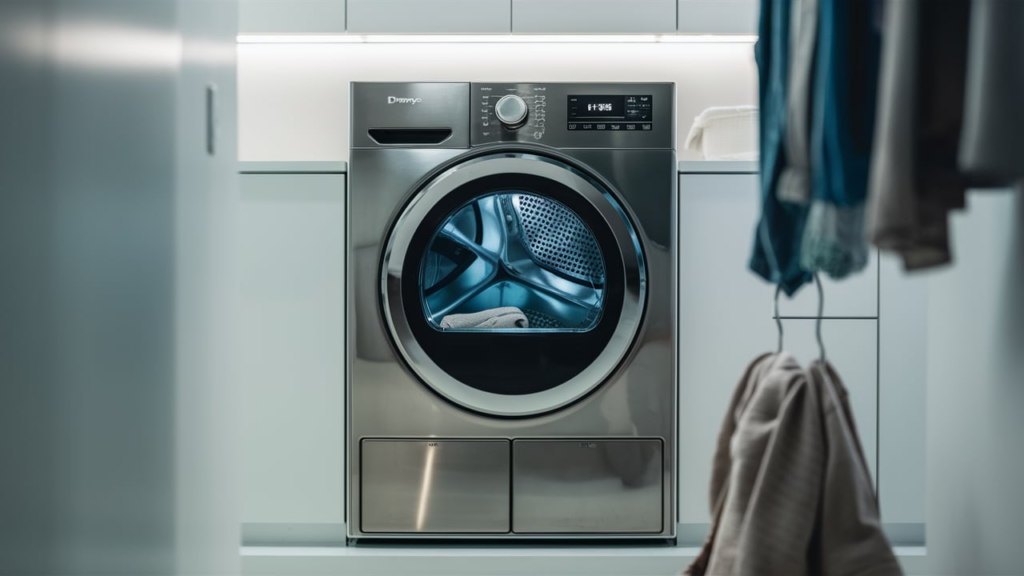
A malfunctioning appliance can often be traced back to a single faulty component, and fortunately, these issues are sometimes straightforward to fix. For example, if your Whirlpool electric dryer isn’t producing heat, the culprit may be a broken heating element. The good news? Replacing it is a task you can handle on your own with a few basic tools and about twenty minutes of time.
How the Heating Element Works
Whirlpool electric dryers use a coil-based heating assembly to generate the heat required to dry your clothes. Over time, the coils can break, reducing or entirely stopping heat production. If this happens, replacing the heating element assembly is an effective solution.
Signs of a Broken Heating Element
If your dryer’s heating element is failing, you might notice the following issues:
- Clothes Take Longer to Dry: If lightweight items are still damp at the end of a cycle or drying times are significantly extended, the heating element might be producing little or no heat.
- Clothes Aren’t Warm After a Cycle: When the heating element is completely non-functional, the dryer will tumble without generating any heat. This may result in clothes that feel cool or only slightly warm after drying.
- Testing with a Multimeter: Other components can also affect heat production. To confirm the heating element is the issue, use a multimeter to test for continuity.
Other Potential Causes of Heating Problems
If testing reveals the heating element isn’t the problem, consider these other possibilities:
- Thermal Fuse or Thermostat: These safety components prevent overheating by cutting power to the heating element if the dryer gets too hot. If tripped, they will need to be replaced. A multimeter can help you test these parts, usually located near the heating element.
- Faulty Timer: A malfunctioning timer may disrupt the drying cycle, preventing heat from being generated. This component can be found in the dryer’s control console and also requires a multimeter for testing.
- Lint Build-Up and Blocked Vents: Accumulated lint can obstruct airflow, leading to overheating or ineffective drying. Always clean the lint filter after each use and check the dryer vents annually to keep them clear.
- User Habits: Overloading the dryer or adding overly wet clothes can strain its functionality. Refer to the user manual for load capacity guidelines and make sure clothes are properly wrung out before starting a cycle.
How to Replace a Whirlpool Dryer Heating Element
Disconnect Power and Prepare the Dryer
- Disconnect the dryer from power by unplugging it from the wall outlet or flipping the circuit breaker.
- Pull the dryer away from the wall to access the back. Disconnect the vent hookup if necessary.
Remove the Back Panel
- Use a ¼-inch nut driver to remove the screws securing the back panel (typically nine screws: three on each side and three at the top).
- Remove the smaller top panel near the power cord and drape the cord over the front of the dryer.
- Lift off the large back panel and set it aside.
Disconnect the Wires
- Note the placement of the wires connected to the heating element and thermostat by labeling them with masking tape or taking a photo.
- Disconnect the wires by hand or use a flathead screwdriver if the connections are tight.
Remove the Old Heating Element
- Use the ¼-inch nut driver to remove the two hex head screws securing the heating element to the heating tube.
- Slide the old heating element out of the heating tube.
Transfer the Thermostat (if reusing)
- Use a flathead screwdriver to pop the thermostat off its terminal on the old heating element.
- Rotate and release the thermostat from the tab holding it in place.
- Attach the thermostat to the new heating element by seating it on the corresponding tab and reconnecting it to the terminal.
Install the New Heating Element
- Align the new heating element with the heating tube and press it into place.
- Secure it with the two hex head screws removed earlier.
Reconnect the Wires
- Reattach the wires to their original positions: one to the thermostat and two to the heating element’s terminal.
- Double-check all connections for accuracy.
Reinstall the Back Panel
- Place the large back panel onto the dryer, aligning it with the vent tube and screw holes.
- Secure it with screws along the edges, leaving the inner right screw for last.
- Reposition the power cord and reattach the smaller top panel by slotting its tab and securing it with the final screw.
Reassemble and Test
- Push the dryer back into position and reconnect the vent hookup if it was removed.
- Restore power to the dryer and test it to verify the new heating element works.
Preventing Future Heating Problems
Routine maintenance and proper use of your dryer can help avoid heating issues. Some tips include:
- Regular Cleaning: Clean the lint filter after every use and check the vent and duct system at least once a year to prevent blockages that can lead to overheating or inefficient drying.
- Balanced Loading: Avoid overloading the dryer, as this can strain the appliance and reduce its ability to dry clothes effectively. Refer to your manual for the recommended load size.
- Timely Inspections: Periodically inspect key components like the heating element, thermostat, and thermal fuse to detect wear or damage early.
A broken heating element doesn’t mean you have to spend a fortune on repairs or buy a new dryer. With a bit of effort, you can tackle this fix and keep some cash in your pocket.
Here’s the thing: keeping your dryer in good shape helps it work better and last longer. Clean the vents, don’t overload them, and check on them every once in a while. Small, simple habits make a big difference. After all, no one wants to deal with a broken dryer when the laundry pile is already out of control.
